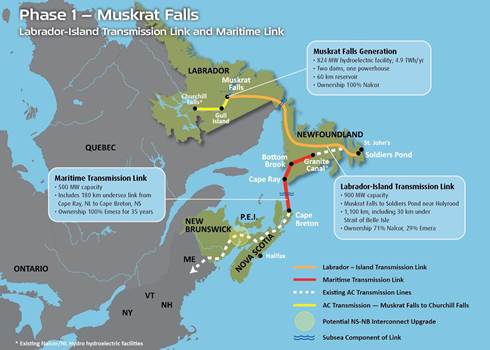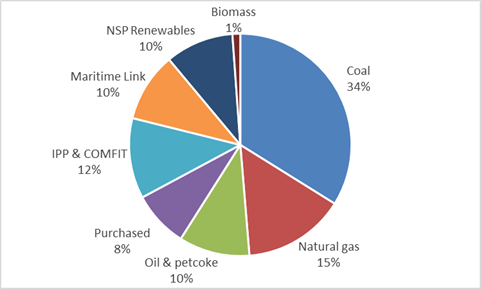Nova Scotia Power has a link problem
Larry Hughes, PhD
Dalhousie University
3 March 2023
In late February, Emera's CEO Scott Balfour is reported to have said that the Maritime Link saved Nova Scotia Power's customers $100 million in fuel costs ("Emera confident Ottawa will fund Atlantic Loop", allnovascotia.com, 24 February 2023).

While the savings are undoubtedly good news, Mr. Balfour and Nova Scotia Power's Management's Discussion & Analysis (MD&A) for 2022 failed to mention several other important issues related to the supply of electricity from renewable sources.
Last year, Nova Scotia Power produced or purchased about 32.8 percent of its electricity from renewable sources. This was the first time more than 30 percent of Nova Scotia Power's electricity came from renewables.
However, the sources of this electricity are hidden in this year's MD&A report. The renewable electricity Nova Scotia Power purchases from Independent Power Producers (IPP), COMFIT, and Newfoundland and Labrador Hydro (NLH) via the Maritime Link are grouped together and listed as "Purchased power" in the report.
Despite this, we do know the volume of electricity supplied by the Maritime Link.
Each month NLH is required to publish the volume of electricity it produces, purchases, and exports. The data shows that in 2022, NLH was able to supply Nova Scotia Power with an estimated 1,119 gigawatt-hours of electricity over the Maritime Link.
The 1,119 gigawatt-hours is just shy of the 1,130 gigawatt-hours NLH is contracted to supply Nova Scotia Power.
As the following chart shows, about 12 percent of the electricity available in the province came from IPPs and COMFITs, 10 percent from the Maritime Link and Nova Scotia Power's own renewables (wind and hydroelectricity), and about 1 percent from biomass. The remainder came from emissions-intensive sources such as petcoke (petroleum coke), natural gas, and coal.

However, the volume of electricity from renewables, about 3,655 gigawatt-hours, was only 35 percent of the 10,456 gigawatt-hours Nova Scotia Power sold to its customers in 2022.
Unlike the $100 million in savings announced by Mr. Balfour, this is not good news. It means that for the third straight year, Nova Scotia Power was unable to reach the legislated target of 40 percent of its electricity sales coming from renewables.
This could have other repercussions. The province's Renewable Energy Regulations require Nova Scotia Power to have 40 percent of its total electricity sales come from renewable sources between 2020 and 2022. It only achieved 31.5 percent. If it can be shown that Nova Scotia Power failed to act in a "duly diligent manner" to reach the 40 percent target, the company could be subject to a penalty of up to $10 million.
A reliable supply of electricity from NLH via the Maritime Link is essential if Nova Scotia Power is to supply 80 percent of its electricity from renewable sources by 2030.
If NLH is to be a reliable supplier of the volumes of electricity required by its own customers and Nova Scotia Power, it will need to access the Muskrat Falls hydroelectric site in Labrador. Getting electricity from Muskrat Falls to the island of Newfoundland requires the Labrador-Island Link (LIL) to be operating.
However, ongoing software faults and physical failures of LIL meant that it was working intermittently throughout 2022. During this time, LIL supplied NLH with about one-third of the electricity it should have and over three-quarters of that went to Nova Scotia Power.
Past MD&A reports show that LIL has been an ongoing problem since 2020. This year's MD&A states that the final commissioning of LIL is expected in 2023; then again, last year's MD&A talked about final commissioning in 2022.
Hope springs eternal. But you cannot build an energy strategy on hope.
Published: allnovascotia.com 3 March 2023